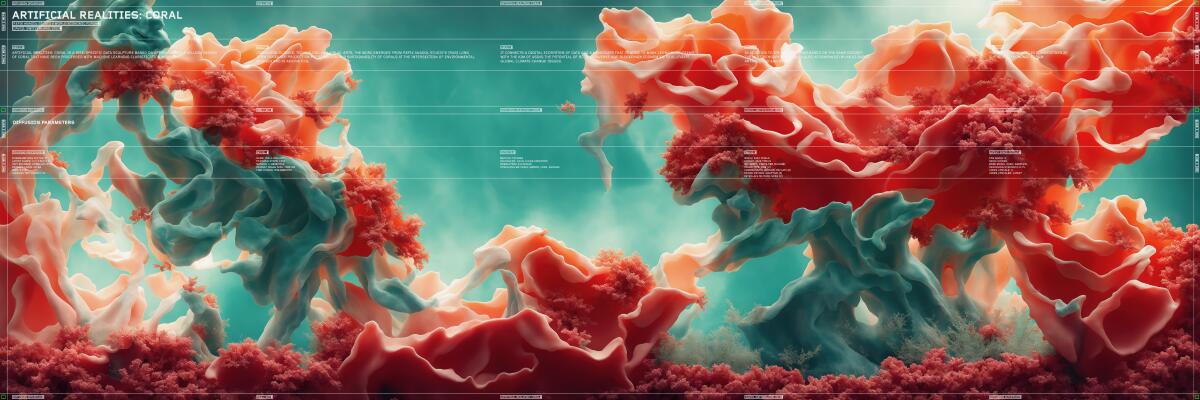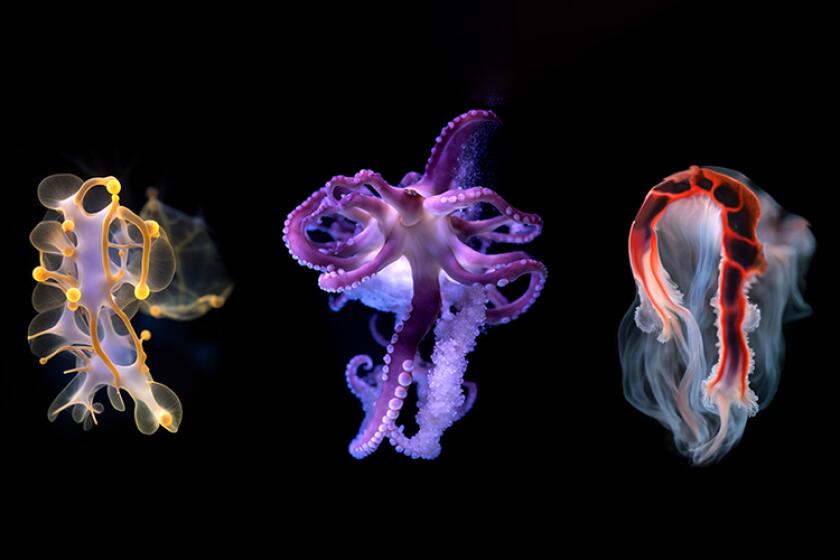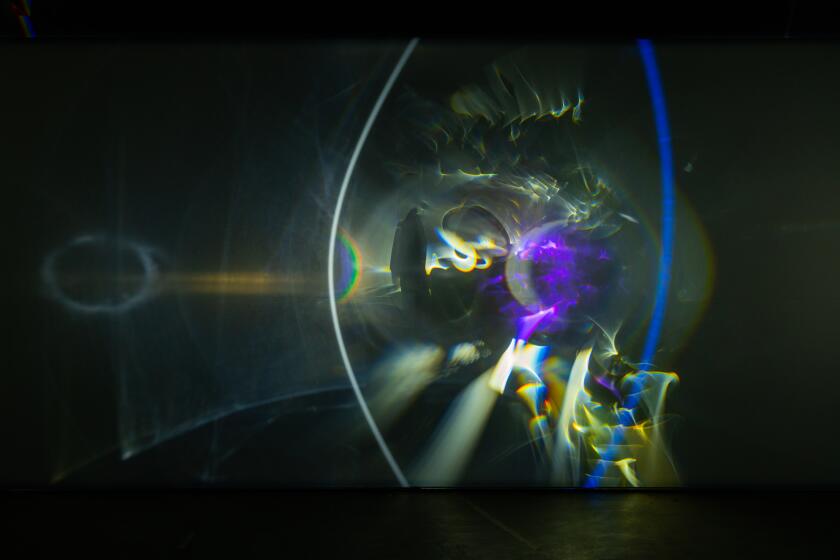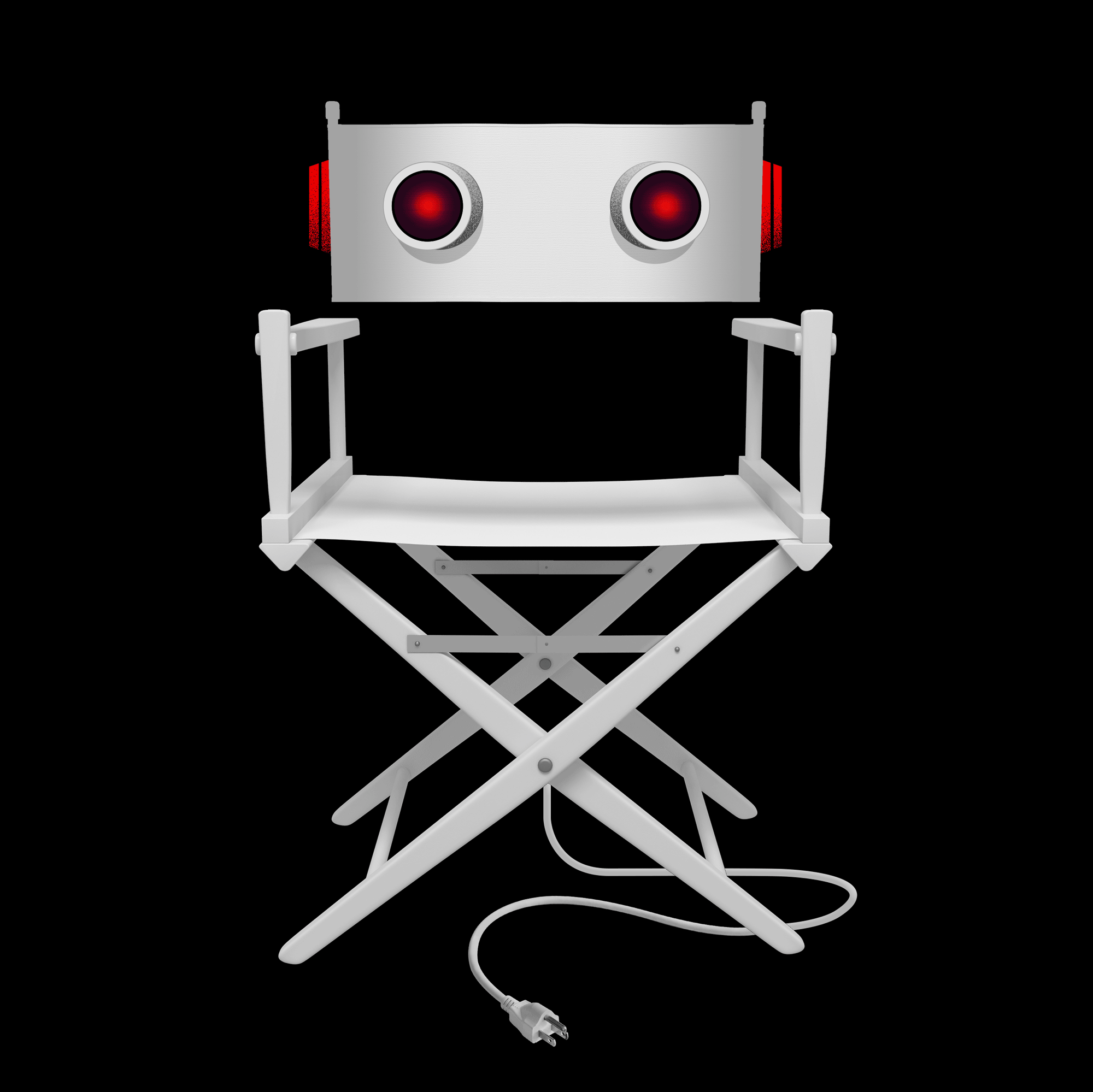Dataland, the world’s first AI arts museum, will anchor the Grand complex in downtown L.A.

- Share via
- New media artist Refik Anadol will open his museum near MOCA, the Broad and Walt Disney Concert Hall.
- Dataland will use millions of photos and other records from partners including the Smithsonian and London’s Natural History Museum to create its installations.
Refik Anadol, the artist who projected the history of the Los Angeles Philharmonic as a piece of algorithmic video onto the curving steel walls of Frank Gehry’s Walt Disney Concert Hall in 2018, announced Tuesday that he will open the world’s first museum of AI arts across the street next year.
It’s no coincidence that Anadol picked the Gehry-designed Grand L.A. development as the location for his new museum, called Dataland, so close to the venue that helped push his career to new heights. He has emerged as a leader of AI-generated art, with commissions that include a piece at L.A.’s new Intuit Dome. Coming full circle just makes sense, he said. As does launching a museum in L.A. dedicated to technology poised to change practically everything about the way we live.
“We are blending Gehry’s building with AI’s infrastructure and technology, and this never-seen-before art form,” Anadol said with animated intensity during an interview on the 31st floor of the Grand’s residential tower, which has a bird’s-eye view of Disney Hall. “And I’m calling this new art form not AR, not VR, not XR — so we are still finding a name for it. The best name so far, and people love it, is generative reality.”
The latest installment of Pacific Standard Time, the museum series that this year is titled ‘PST Art: Art & Science collide,’ has arrived. Here’s our shortlist of exhibitions and events.
Nicholas Vanderboom, chief operating officer of the Grand’s developer, Related California, said Dataland will serve as the $1-billion mixed-use development’s anchor. Two years after opening, its 45-story apartment tower is almost fully leased, he said, but retail tenants have been more difficult to attract. The original vision for the Grand, Vanderboom said, was for it to complement the Grand Avenue arts corridor, with restaurants and shopping for people visiting the nearby Museum of Contemporary Art, Broad museum, Disney Hall, Dorothy Chandler Pavilion, Ahmanson Theatre and Mark Taper Forum. Dataland changes that equation, placing the Grand L.A. firmly inside downtown’s cultural core, he said.
“I think it’s just one more thing happening on the Grand Avenue corridor, with the Colburn School expansion under construction across the street from us, and with the Broad expansion getting ready to start next year,” Vanderboom said. “And now this. I think it just solidifies Grand Avenue as the cultural connector and center of Los Angeles.”
The 20,000-square foot museum, whose exact opening date has not yet been announced, is being built with four gallery spaces by the Gensler architectural firm. An escalator will take guests from the entrance under a soaring, 30-foot ceiling to immersive experiences below. Dataland is privately funded and will collect and preserve artificial intelligence art; certain artworks may be sold on the blockchain. A nonprofit branch of the organization, founded in 2023 (called RAS AI Foundation), is dedicated to the expansion of ethical AI research.

Dataland won’t be like any other museum, said Anadol, who is calling it a “living museum” made of pixels and voxels, which are mathematical representations of 3D imagery. Its pièce de résistance is its very own AI model, called the Large Nature Model. Designed by Anadol’s studio, the model uses data sourced from partners including the Smithsonian (9 million public specimen records, 6.3 million public images, 148 million objects in its collection); London’s Natural History Museum (90 million specimens in its collection, 4 million public images); the Cornell Lab of Ornithology (54 million images, 2 million sound records). AI will create artworks using this data and more — up to a half-billion images of nature, Anadol said.
Anadol was quick to add that he is making “ethical AI” the linchpin of his practice. He secured permission for every bit of sourced material (a step not always followed in AI-model training), and all of the studio’s AI research was performed on Google servers in Oregon that use only renewable energy. It’s slow, Anadol says, but it does the job without fossil fuels. A future version of the Dataland website will include access to the Large Nature Model for educational and research purposes, and a widget will track in real time how much energy is being used.
A piece of Anadol’s research into the natural world using Dataland’s AI model, called “Large Nature Model: Coral,” is being shown at the United Nations’ Summit of the Future, which is exploring sustainable development goals, climate action and new and emerging technologies.
“This is a little AI model that we are putting underwater to reconstruct corals,” Anadol said, adding that this work can ultimately lead to the revitalization of coral ecosystems. He is sharing his research with teams at the United Nations.

Icelandic Danish artist Olafur Eliasson’s eye-grabbing creations prove exhilarating at the Geffen Contemporary at MOCA. Lucky for us, the artist shows how the smoke and mirrors work.
For Anadol, education, and the sharing of technology, data and AI models, will be integral to Dataland’s mission.
Anadol also said that while a hallucinating AI model might be interesting and beneficial for making art, it’s not good for scientific research, which is why the Large Nature Model was meticulously sourced from trusted organizations to create the most accurate results. He showed the possibilities contained within his high-powered laptop. “These are all the beautiful flowers of rainforest,” he said. “We have 75 million flowers, all perfectly tagged one by one, which took us one year. Now, artists can use it. Researchers can deep dive into it.”
Oh, and you can also smell it. Anadol’s studio partnered with a scent-making company that trained an AI model on half a million scents. Anadol created a machine that pushes those scents into galleries to further augment the viewing experience. He pulls up a picture of his invention on his computer. It shows a complex webbing of crenelated tubes connected to a mysterious mustard-colored box.
He pulled up another picture of a gallery in Italy filled with one of his mesmerizing living paintings.
“When you enter this room, it is dreaming all the flowers in the world,” Anadol said. “And you can really smell these AI dreams.”
Anadol traces his fascination with AI to grade school, when he saw the sci-fi film “Blade Runner,” which is based on Philip K. Dick’s novel “Do Androids Dream of Electric Sheep?”
A staff memo at the Los Angeles County Museum of Art indicates construction is further delayed, but when it is completed, the museum expects to hold programming inside the empty building before its official opening.
The idea that AI might become sentient does not fill Anadol with terror. Where others see the demise of what makes us human, Anadol sees AI as a co-creator and “co-being.” It might just be mimicking reasoning at the moment, but that is likely to change, he said. It’s making us question the basic underpinnings of our reality. It’s “the new campfire.”
“I think AI means anything and everything,” Anadol said. To him, AI is an intelligent, reasoning system. “Some people say it’s a tool. I don’t think we should call it a ‘tool.’ That underestimates its power.”
More to Read
The biggest entertainment stories
Get our big stories about Hollywood, film, television, music, arts, culture and more right in your inbox as soon as they publish.
You may occasionally receive promotional content from the Los Angeles Times.














